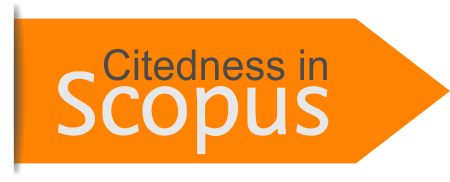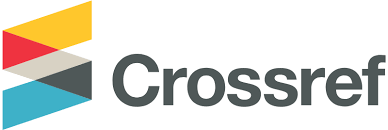THE IMPROVEMENT OF TOURIST-VILLAGE PROMOTION THROUGH THE OPTIMALIZATION OF INFORMATION AND COMMUNICATION TECHNOLOGY FOR RURAL-YOUTH
Abstract
Bogor Regency is one of the Jakarta’s buffer cities that able to provide alternative tourism locations for the citizen of the capital and surrounding areas. Ciasmara Village is one of the tourism villages located in Bogor Regency. The main problem encountered by tourism in Ciasmara Village is the lack of promotion and limited infrastructure. These two problems are the biggest factors that hinder the tourism potential of Ciasmara village from being optimally managed. The purpose of this community service activity is to optimize tourism potential through the information and communication technology. Furthermore, the other purpose is to support the behavior shifting of the youth organization in terms of utilizing information and communication technology for the benefit of Ciasmara Tourism village promotion. The method used in this community service activity was discussion and direct training to Ciasmara Village's youth organization. The objective of this community service is Ciasmara Village's youth organization. In the beginning, the target amount of the training participants was at least 20 young people, because there were only 20 active members of the youth organization. In its implementation, this activity was attended by 31-35 participants, indicating that this community service was enticing for Ciasmara village's youths. Through interviews with the head of the youth organizations and the participants, they acknowledged that they were interested in participating in this activity because they felt they had a responsibility to develop village promotions, some of the youth said that they had social media and could promote their area for free. From interviews with several participants and village officials, it was found that this community service activity was able to motivate them to study photography more seriously and utilize social media for the promotion of rural tourism. This can be recognized from the development of official Instagram social media account owned by Ciasmara Village which is indeed focused on promoting tourism and governance in Ciasmara village.
Keywords
Full Text:
PDFReferences
Apjii. 2016. Infografis Penetrasi & Perilaku Pengguna Internet Indonesia Survey 2016.
Brofenbrenner, Urie. (1999). Environments in Developmental Perspective: Theoretical and Operational Models in SL Friedman & TD Wachs (eds). Measuring Environment Across the Life Span: Emerging Methods and Concepts (pp 3-28). Washington, DC. American Psychological Association Press.
Crawford, M. (2011) The Case for Working With Your Hands: Or Why Office Work is Bad for Us and Fixing Things is Good. London: Penguin Books
Chessa, Antonio G. & Jaap M.J. Murre. 2004. A Memory Model for Internet Hits After Media Exposure. Journal, Physica A 333 (2004) 541 – 552
Cobb, NJ. 2010. Adolescence: Continuity, Change, and Diversity, Seventh Edition, Sinauer Associates. USA.
Huijsmans, RBC. (2010). Migrating Children, Household, and Post – Socialist State: An Ethnographic Study of Migration and Non- Migration by Children and Youth in an Ethnic Lao Village. PhD Theses. Durham University.
Jayawinangun R and Nugraha YA. 2018. Utilization of Internet and Social Media among Rural Youth . Jurnal Wahana (24) No 2. Universitas Pakuan
Kasten, Kenneth. 2013. Media Exposure and Risk. Wyman Street, Waltham, MA: Elsevier.
Katz, Cindi 2004 Growing Up Global: Economic Restructuring and Children’s Everyday Lives. Minneapolis: University of Minnesota Press.
Manning, M. Lee (2002) Havighurst's Developmental Tasks, Young Adolescents, and Diversity, The Clearing House: A Journal of Educational Strategies, Issues and Ideas, 76:2, 75-78
Nugraha, YA. (2012). Correlation Between Parents, Peers, and Mass Media with Rural Youth Attitude towards Agricultural Work. Tesis. Institut Pertanian Bogor. Bogor.
Nugraha, YA dan Herawati, R. (2015). Unmasking The Reality of Youth in Agriculture. Jurnal Analisis Sosial: Vol 19 No 1.
Rheingold, H. 1993. The Virtual Community : Homesteading on the Electronic Frontier.Reading; Addison-Wesley.
Rogers, E. M. (2003). Diffusion of innovations. New York: Free Press.
Torres-Harding S, Barber A, Hilvers J, Hobbs N, and Maly M. (2018). Children as Agent of Social and Community Change: Enhancing Youth Empowerment Through Participation in a School-based social-activism project. Journal of Education, Citizenship, and Social Justice. Vol 13 No 1: 3 -18.
White, B. (2012) Agriculture and The Generation Problem: Rural Youth, Employment and the Future of Farming. IDS Bulletin, 43 (6), pp. 9-19.
White, B. (2019). Rural Youth, Today and Tomorrow. Rural Development Reports. IFAD
DOI: https://doi.org/10.46336/ijbesd.v1i2.29
Refbacks
- There are currently no refbacks.
Copyright (c) 2020 International Journal of Business, Economics, and Social Development

This work is licensed under a Creative Commons Attribution 4.0 International License.
Published By:
IJBESD: Jalan Riung Ampuh No. 3, Riung Bandung, Kota Bandung 40295, Jawa Barat, Indonesia
IJBESD Indexed By:
 This work is licensed under a Creative Commons Attribution 4.0 International License.
This work is licensed under a Creative Commons Attribution 4.0 International License.






.png)



